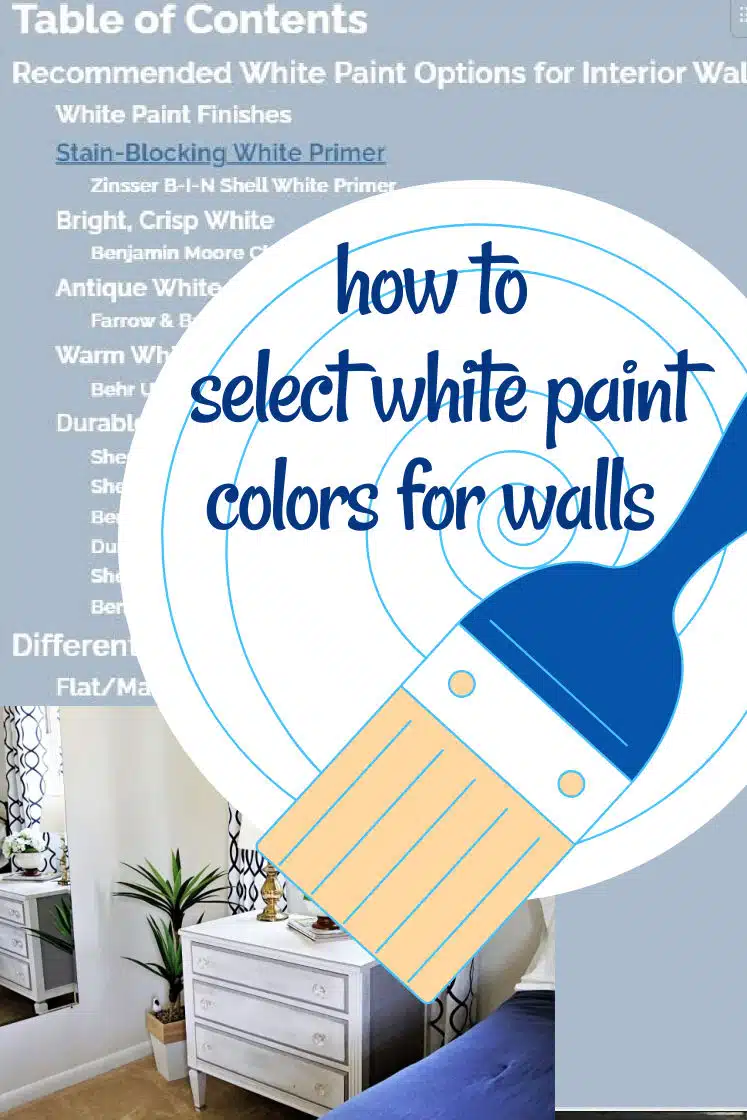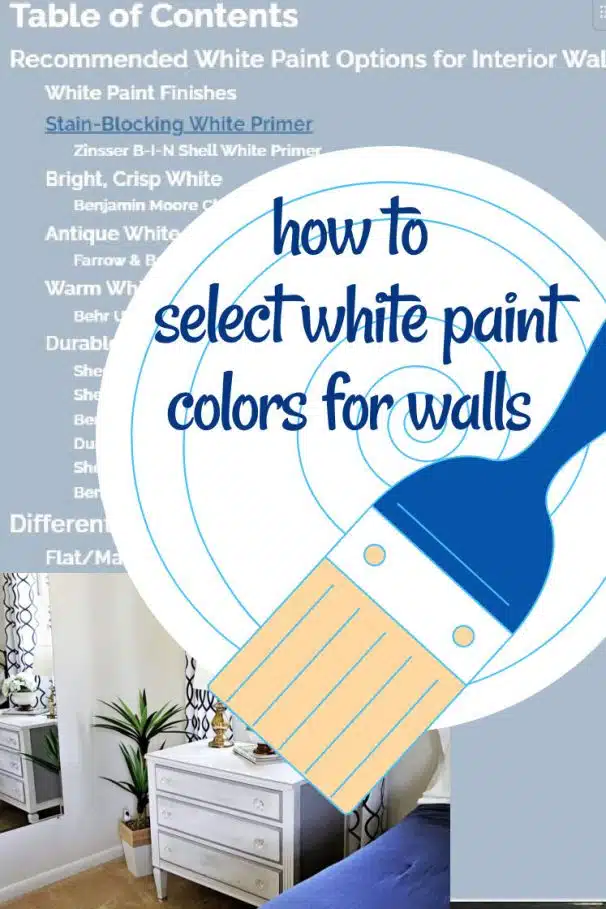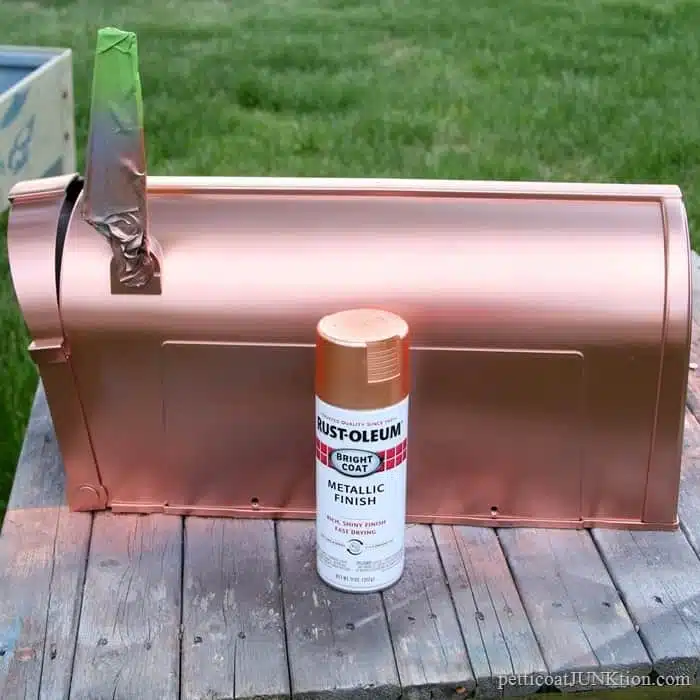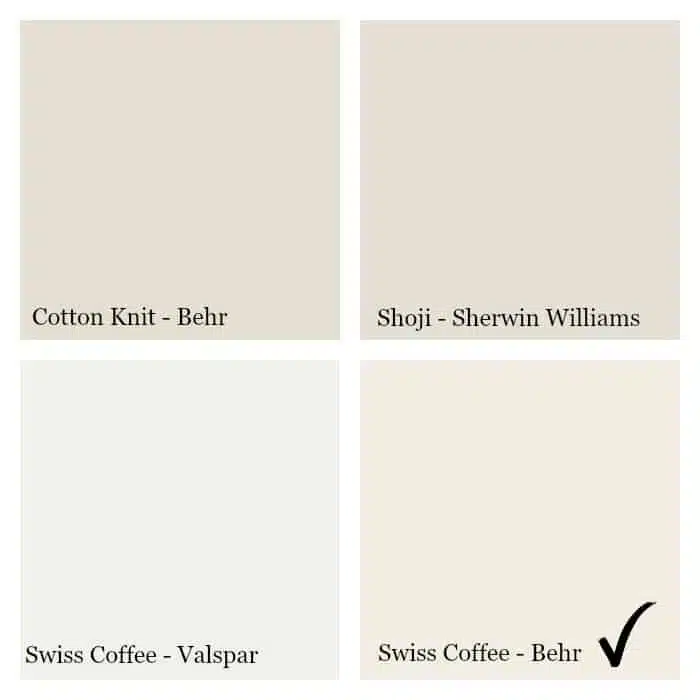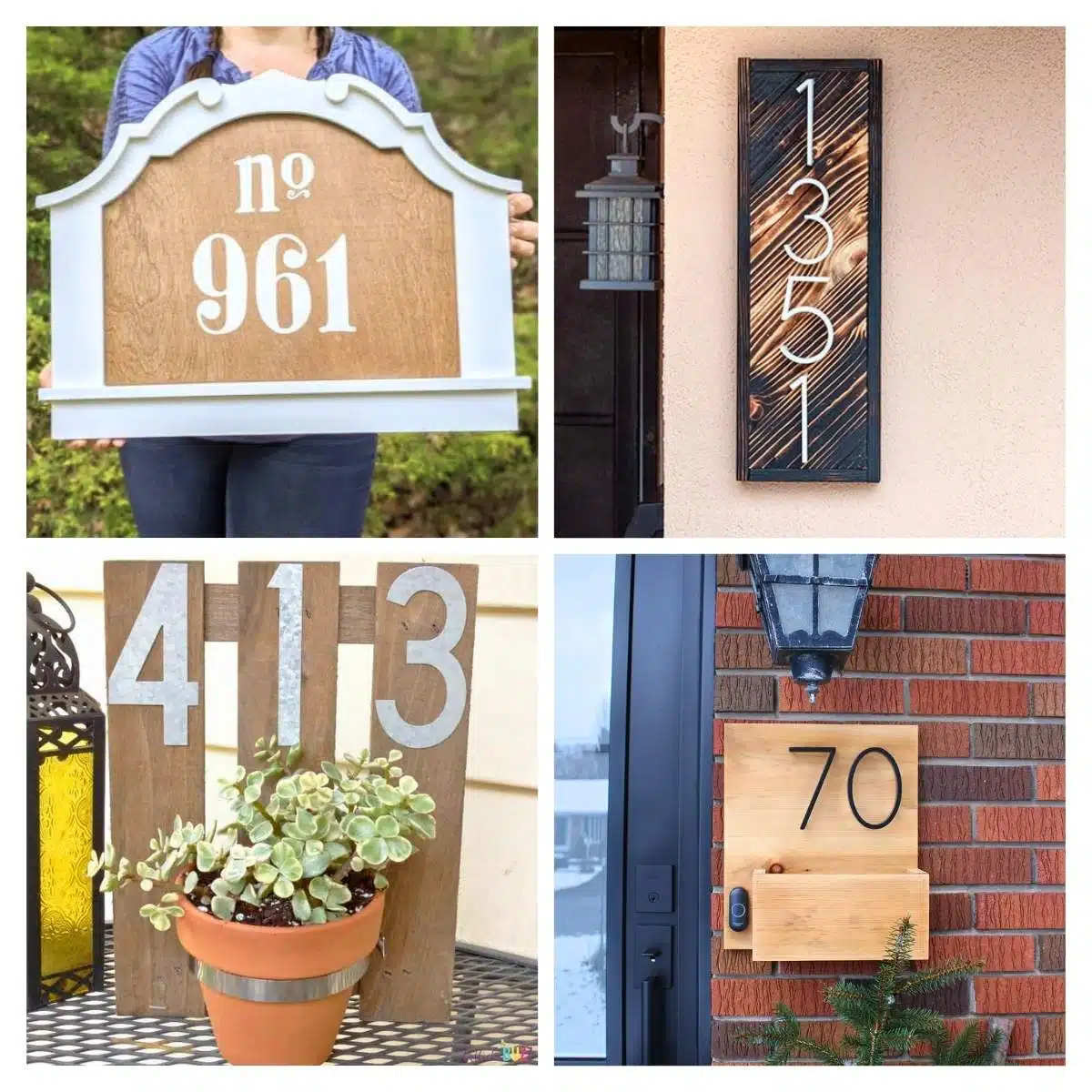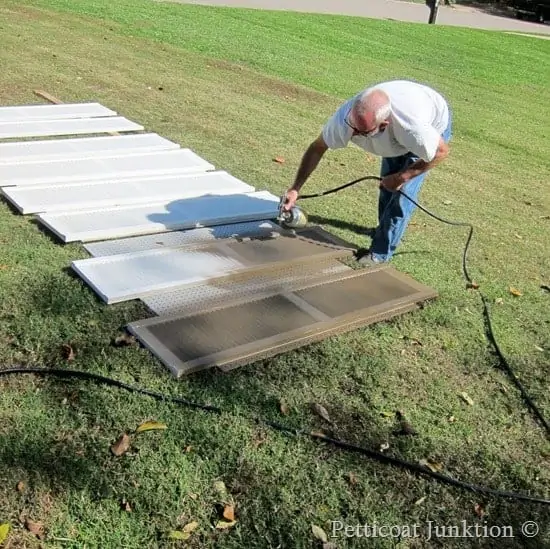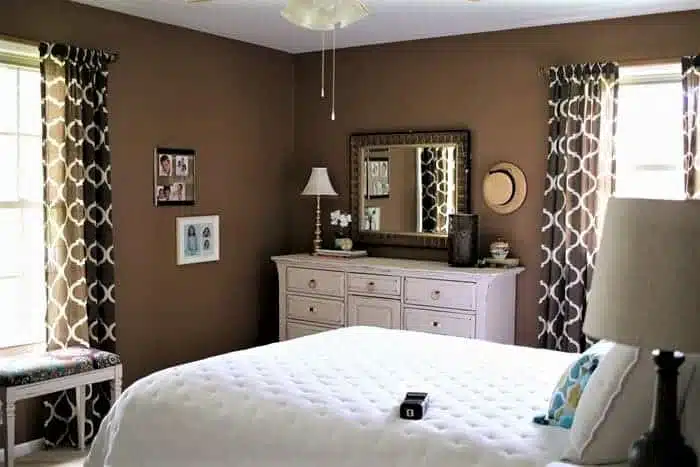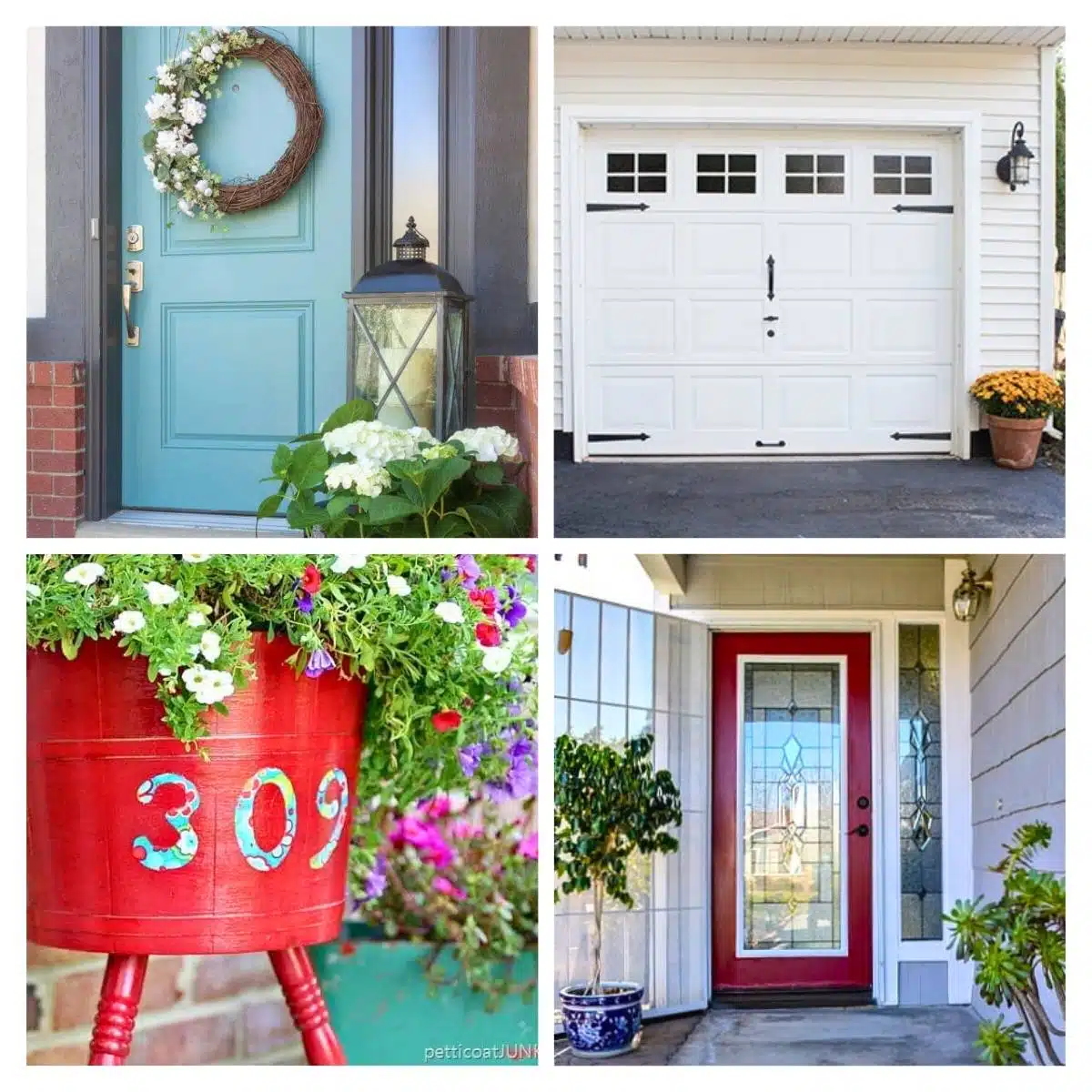Choosing White Paint Colors For Walls Plus How To Prep And Paint
As an Amazon Associate, I earn from qualifying purchases.
This article studies white paint color options and how to prep your walls and paint your house, considering many factors, including types of finishes, durability, major paint bands, and popular colors.
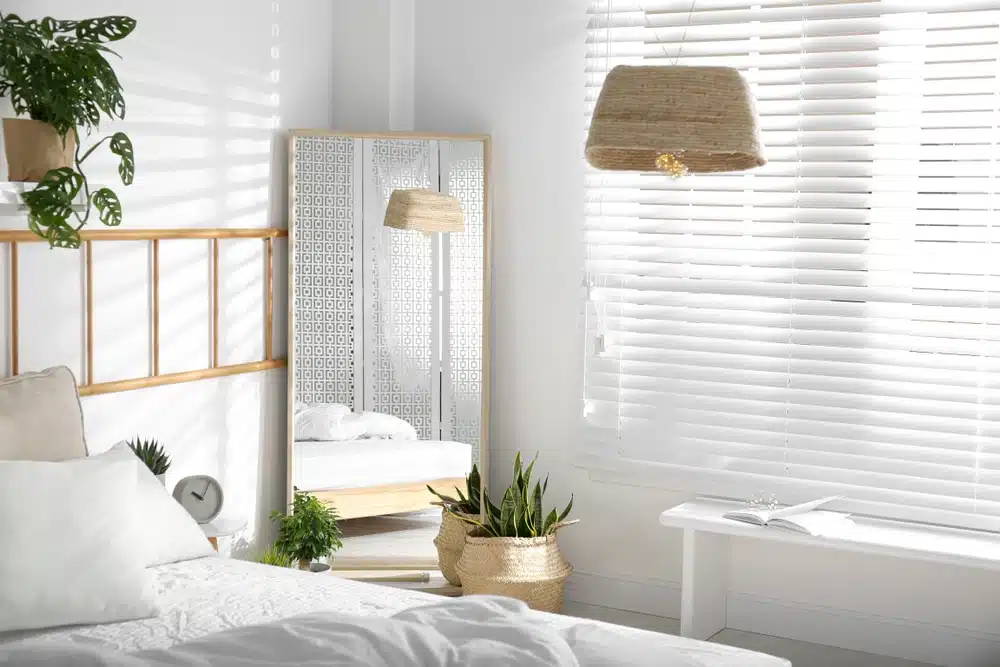
White interior walls can make a home feel so inviting. There are tons of different shades and finishes of white to choose from. Let’s cover popular white paint color options, factors to consider when choosing white paint, usage and application tips, and more.
[ez-toc]
Best White Paint Color Options for Your House
Within each broad paint type below are specific white paint color options favored by many homeowners:
White Paint Finishes
- Flat: Benjamin Moore Simply White
- Eggshell: Sherwin-Williams Pure White
- Satin: Behr Ultra Pure White
- Semi-Gloss: Pittsburgh Paints Perma-White
Stain-Blocking White Primer
-
Zinsser B-I-N Shell White Primer
Bright, Crisp White
-
Benjamin Moore Chantilly Lace
Antique White Paint
-
Farrow & Ball School House White No. 2003
Warm White for Walls With Imperfections
-
Behr Ultra Natural Choice
Durable Bathroom & Kitchen White
-
Sherwin-Williams ProMar 200 Zero VOC Acrylic
Many people frequently turn to these top white paint colors for walls:
-
Sherwin-Williams Snowbound (SW 7004)
– A crisp, clean white with faint cool undertones. Snowbound has a slight gray tint that flatters most spaces.
-
Benjamin Moore Atrium White (OC-145)
– This versatile classic white with yellow undertones works well in various room types and lighting conditions.
-
Dunn Edwards Cool December (DEW383)
– A bright, cloud white that pops against dark trims and floors. It has a touch of blue undertone.
-
Sherwin-Williams Moderne White (SW 6168)
– A warm, welcoming white with a creamier tone. The subtle beige undertone keeps it from looking sterile.
-
Benjamin Moore Ivory White (925)
– A popular softer white paint color with a subtle yellow/beige undertone. Warms up contemporary spaces beautifully.
Different White Paint Finishes
The paint finish determines the amount of sheen, durability, and ease of cleaning. For white interior wall paint, common options include:
Flat/Matte
- Minimal light reflection, velvety matte appearance
- Hides imperfections well
- More prone to stains and scuffs
- Ideal finish for ceilings and low-traffic areas
Eggshell
- Soft, smooth finish with a slight sheen
- Stands up to cleaning better than flat
- Reflects light well on walls
- Best for bathrooms, kids’ rooms, hallways
Satin
- Lightly reflective, pearl-like appearance
- Scrubbable and durable
- Resists stains, fingerprints
- Ideal for living rooms, bedrooms
Semi-Gloss
- Medium-high reflectivity, glossy look
- Most durable and scrubbable
- Shows imperfections on walls
- Best for kitchens, baths, trim
How To Choose the Right White Paint For Your House
Follow these tips to find your perfect shade of white:
Think about the room size and lighting.
Small, dark spaces often benefit from bright white paint, while larger or naturally well-lit rooms can handle softer whites if desired.
Understand undertones.
White paint colors have hints of gray, yellow/beige, blue, or cream. These undertones subtly affect the look.
Test samples.
Paint 4’x4′ sections on walls with different whites in each lighting condition to compare accurately before finalizing a selection.
Factor in other elements.
Determine if your flooring, furniture, and tilework pair better with cool or warm white paint undertones.
Use different sheens.
Contemplate combining finishes like semi-gloss on trim and eggshell walls for visual interest.
White paint can look dramatically different on a wall vs. a paint chip! Spend time comparing samples in your space before making a final decision.
Factors in Choosing White Paint
Reflect on what you hope the white paint will achieve before selecting a product:
- What level of shine do you want – flat to glossy?
- Will the area endure high traffic or easy staining?
- Do you need to hide existing imperfections in walls?
- Do you want white with warm or cool undertones?
- Does the room lighting emphasize yellow/blue tones?
- Is this your personal preference for style?
Analyze factors like these above so the white paint fulfills practical needs as you prefer and envision.
Different Base Types for White Paint
The base that white paint is built on impacts several factors:
Water-Based vs. Oil-Based
- Water-based – lower odor, easier cleanup with water, better for the environment
- Oil-based – harder finish resists scuffs/stains, requires mineral spirits for cleanup
Primers
Priming helps better adhesion and more even color results. There are specialty primers like:
- Stain-blocking – prevents stains from bleeding into paint
- Adhesion-promoting – improves grip on slick surfaces like tile and metals
Tintable vs. Non-Tintable
- Tintable bases – can be custom colored by adding pigment
- Non-tintable whites – cannot be altered and provide truer whites
Tips for Using White Paint Effectively
Follow pro tips when working with white paint:
Think of other design elements. Will your flooring, furnishings, or accents pair better with a crisp white or antique white?
Use different sheens intentionally. For example, semi-gloss white on trim framed with subtle matte walls draws the eye outward, enhancing the feeling of expanded space.
Test properly. Paint large sample sections instead of relying on paint chips alone to determine the final color and finish selection.
Prep thoroughly. White paint easily shows imperfections. For best results, take time to clean, patch, sand, and spot prime walls.
Apply carefully. Use cutting-in and rolling techniques properly without applying paint too thickly, which causes visibility issues once dried. Consider spraying for most even applications.
Combining preparation best practices with thoughtful design choices will help white paint meet its potential to upgrade any interior space.
Choosing Brand and Quality Grade
With any paint brand and line, higher quality grades formulated with more durable resins and additives come at an increased cost. Some variables include:
Brand Comparisons
- Budget – Glidden vs. Premium – Farrow & Ball
- Mid-Range – Behr vs. Sherwin-Williams
- Store-brand vs. paint specialty shops
Grade Differences
- Basic – sufficient for low-traffic areas
- Professional – superior whiteness, adhesion, and stain resistance
Factors Affecting Price
- Base ingredients and additives
- Percent of titanium dioxide – improves hiding power
- Sheen level (flat is the most affordable)
- Brand reputation
Balancing paint quality with budget aims will help determine appropriate products for your unique needs.
Which Brand of White Paint Is the Whitest?
With some brands more known for their relatively tinted or creamy bases, which white paint delivers true neutral bright white?
In our opinion, Benjamin Moore offers some of the purest whites without unwanted yellowing or grayness. Their newer ColorLock Technology also helps whites stay truer over time.
Glidden Premium White and Behr Ultra Pure White work well for clean, bright whites if you are seeking affordable options. Compare these paint swatches in your space before deciding!
Preparing Surfaces and Painting Your House
To achieve the best results, properly prepare and apply white interior wall paint:
Clean Surfaces
– Remove dirt, soap residue, grease, and grime so the paint adheres well. For glossy or recently painted areas, wash walls with household cleaner. For heavy stains like tobacco smoke residue, clean with a heavy-duty degreaser TSP alternative prior to painting.
Patch Holes and Imperfections
– Fill any cracks, holes, exposed nail heads, and textural irregularities with lightweight spackle compound. Allow to cure and sand smooth fully.
Sand Glossy Areas
– De-gloss previously coated trim or walls by lightly sanding. This enables the paint to grip surfaces better without flashing differences between flat existing paint and smooth new paint.
Cut In Edges
– Outline ceilings, edges, trim, and corners by hand brushing with a high-quality angled trim brush, maintaining carefully cut transition lines. Ceiling lines may be lightly dragged once partly dry for a subtle, professional-looking texture transition.
Roll On Paint
– Use properly loaded 3/8″ to 1/2″ nap synthetic blend paint roller for smooth walls, applying upward in 4-foot overlapping sections. Maintain a wet edge. Finish individual walls before moving on. For the easiest coverage, spray application works well for broad interior walls and ceiling spaces.
Second Coat Considerations
– White paint often requires a second finish coat, especially over darker existing colors. As directed by the manufacturer, allow proper drying time between coats. The second coat helps achieve full vibrancy and opacity.
Design Styles That Complement White Walls
White-painted walls serve as a neutral backdrop that works well with numerous design aesthetics:
Contemporary Spaces
Crisp true whites like Benjamin Moore Chantilly Lace often adorn modern homes featuring sleek lines, metallic accents, and minimal fuss—high contrast against charcoal gray tones and woodgrains.
Farmhouse or Cottage Rooms
Softer antique white paint colors supplement chippy furniture finishes and distressed wood accents common in rustic cottage decor for light cozy charm.
Traditional Settings
In classically elegant spaces, blending ornate moldings with tailored fabrics and smooth, sophisticated whites evoke timelessness. Softer whites allow bolder trim work to pop.
Transitional Design
Bridging old and new, today’s adaptable transitional interiors with a blend of materials pair well with versatile mid-tone whites that skew slightly warm or cool depending on the lighting.
Bohemian Inspired Decors
Ethereal eggshell white paint envelops boho living spaces with free-spirited global flair. Carefree whites contrast beautifully against tribal prints, woven textures, and exotic woods.
Industrial Look
Studio lofts and modern industrial interiors often incorporate bright, unadorned white walls. Matte finish whites allow urban brick, concrete, black steel, and glass elements to anchor the space.
Do All Whites Eventually Yellow?
Some lower-grade economy paints may slowly yellow over years of exposure to UV light, smoke residue, and certain vapors due to cheaper resins. However, most quality white paints maintain their hue when properly applied.
Factors affecting potential yellowing include:
- Exposure to direct sunlight; north-facing rooms are less prone
- Second-hand smoke lingering on walls
- Off-gassing from some furnishings
- Inadequate surface cleaning and preparation
Any white will stay fresher looking with proper maintenance, like routinely cleaning walls with mild soap and water.
The Way Forward for Choosing White Paint
Finding a shade of white paint suited to your space creates clean, inviting backgrounds for furniture and decor.
When selecting white paint, carefully evaluate the lighting, existing elements, planned use for the room, necessary durability, preferred sheen, and quality grade.
Take time to determine what factors matter most for achieving your ideal raised-up ambiance.
This article originally appeared on Pink When.

